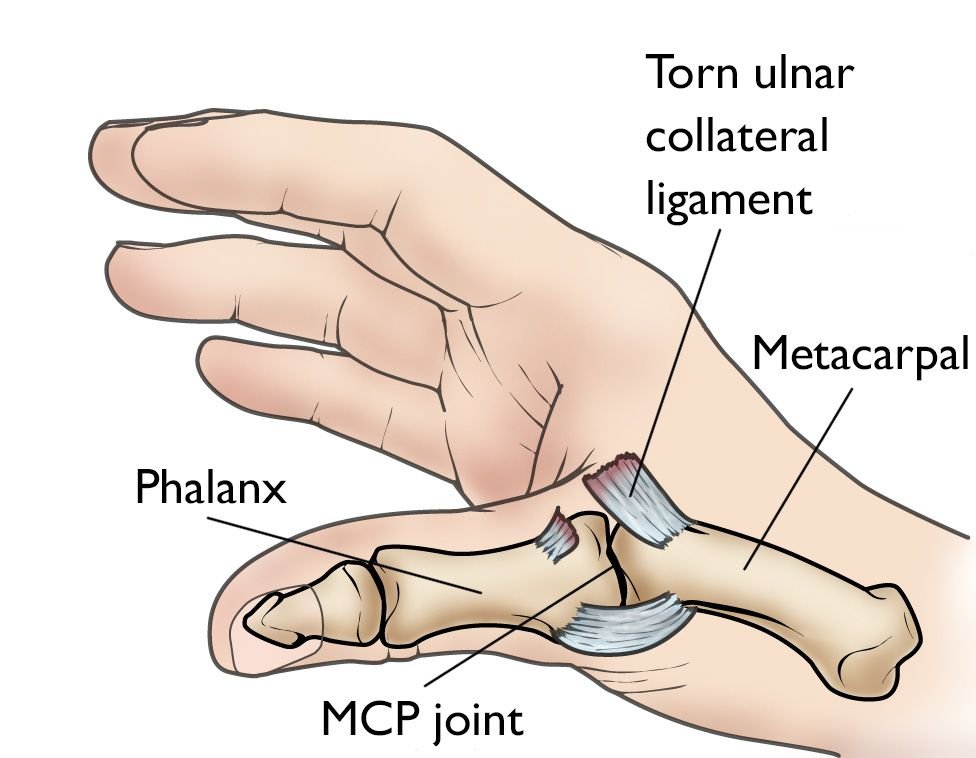Gamekeeper or Skier’s Thumb
Ligaments are structures that attach bone to bone. In the thumb, the ulnar collateral ligament is found on the inside of your thumb knuckle connecting the two bones together. The injury occurs when there is an extreme force that pulls the thumb away from the palm of the hand. This can damage the ligament resulting in a tear (sprain) or rupture. Symptoms include pain, swelling and weakness of the thumb. The goal of treatment is to help the ligaments heal so that the thumb can be restored to full function.The most common mechanism of thumb sprain is falling on an outstretched hand.
There are various degrees of injury in a thumb sprain, spanning from Grade 1 to Grade 3. Grade 1, classified as a mild sprain, only involves stretched ligaments. Grade 2 injuries involve partially torn ligaments and Grade 3 sprains are the most severe. The ligament is either completely torn or pulled off the bone at its attachment site. A small piece of bone can break off along with the ligament, which is called an avulsion fracture. There are two types of injury, with one happening suddenly from an acute trauma and one occurring over time from repetitive movements, called “gamekeeper’s thumb”. Acute injuries from trauma are often called “skier’s thumb” because falling on skis with your hand strapped to a ski pole commonly results in an ulnar collateral ligament injury. The ligament can tear in different ways. The most common site is at the base of the first bone (proximal phalanx) in the thumb or from its origin on the metacarpal bone. However, it can also be torn through its middle. In some cases, your doctor may order an MRI to provide more information on the extent of the injury.
Symptoms of this type of injury include pain, swelling and weakness of the thumb. If the ligament is completely torn, there may be a small bump. The goal of treatment is to help the ligament heal so that the thumb can be restored to full function. Since these injuries typically involve swelling and instability, initial treatment includes resting, icing, applying compression and elevating the injury. Resting will relax the injured area and allow the swelling to go down. Along with rest, icing is an easy and effective way to ease the pain and reduce swelling. Splinting is an effective way of immobilizing the thumb and allowing the ligament to heal without interference. If the ligament is torn and depending on how severe the injury is, your doctor may recommend surgery to repair the tear.

